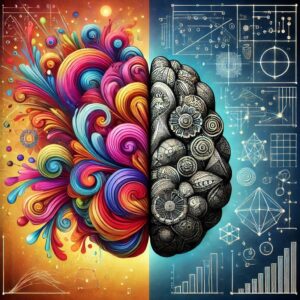When we talk about creativity and analytical thinking, we often think of them as two different mental powers. However, what truly fuels these abilities? The answer lies deep within our personality traits. By understanding our core tendencies, we can better harness our natural strengths to become more creative, more analytical, or even a bit of both.
Personality traits form the backbone of who we are, influencing everything from how we make decisions to how we approach problems. Some people are naturally more analytical, seeing the world through a logical and structured lens. These individuals tend to be high in traits like conscientiousness and tend to excel at tasks requiring detailed analysis and methodical approaches. On the flip side, people who score higher in openness to experience may have a more creative mindset, able to generate novel ideas and see abstract connections.
The Big Five personality model helps us to map these tendencies. Traits such as openness to experience and extraversion often foster creativity by encouraging curiosity and unconventional thinking. Meanwhile, traits like conscientiousness and neuroticism have a stronger link to analytical abilities, as they promote careful attention to detail and critical thinking.
Let’s break this down. Imagine you’re brainstorming for a project. If you’re someone who scores high in openness, you might be more willing to take risks with unconventional ideas. You’ll think outside the box, coming up with unique and innovative solutions. Openness is often the driver behind many creative breakthroughs in fields ranging from art to technology.
Conversely, if you’re high in conscientiousness, your approach might be more structured. You’ll focus on analyzing all the information available, checking every angle, and ensuring that the solution is not only innovative but also practical and efficient. In fact, conscientious individuals are often the unsung heroes who refine creative ideas and ensure their real-world application.
Interestingly, the most effective problem-solvers aren’t just creative or analytical—they have a blend of both. A personality that embraces openness for brainstorming but also conscientiousness for execution is often the key to success in complex tasks. Think of Steve Jobs: a visionary who saw creative possibilities while also relentlessly focusing on the details that made Apple products both functional and beautiful.
Balancing these two traits allows individuals to push boundaries while also grounding their ideas in reality. This is where a dynamic mix of traits creates the best of both worlds—a person who can think big, but also execute with precision.
Understanding how personality traits influence creativity and analytical abilities isn’t just a fascinating study of human behavior—it’s a powerful tool for self-awareness. By recognizing your natural tendencies, you can lean into your strengths and develop areas where you may need a boost. After all, some of the greatest innovations in history have come from individuals who mastered the art of combining creativity and analytical thinking.

